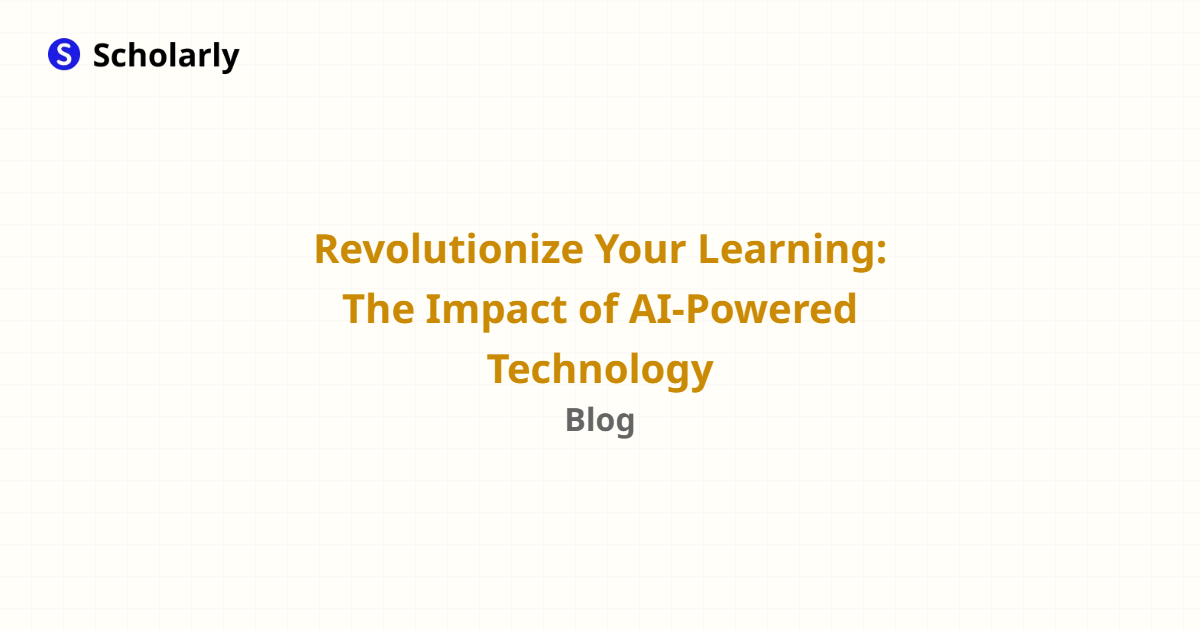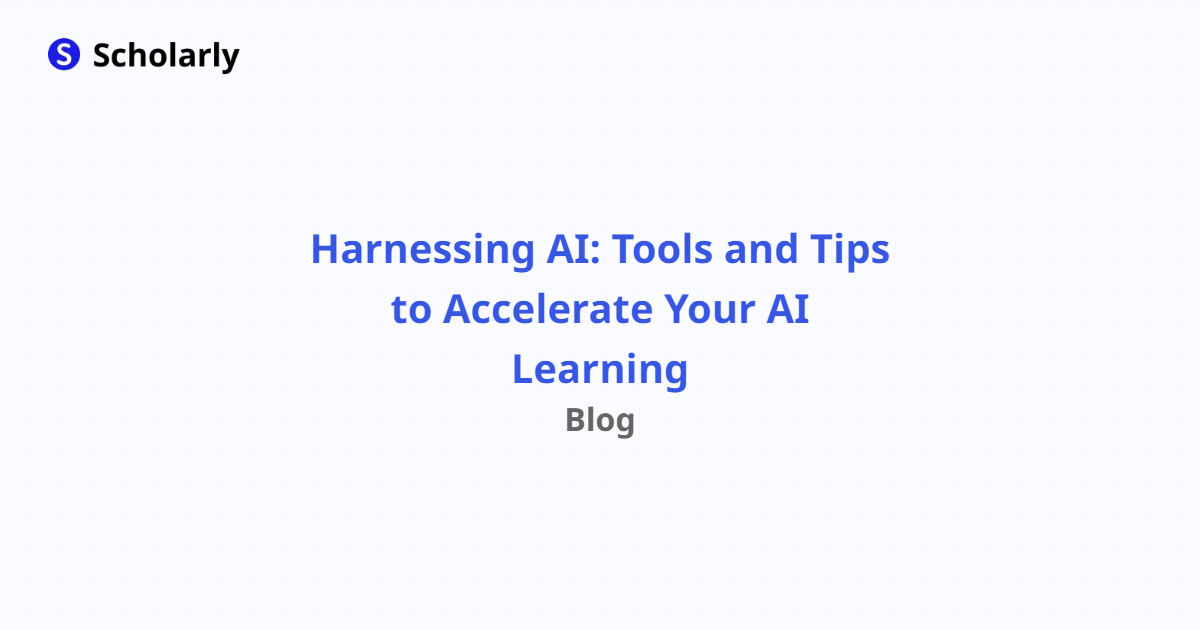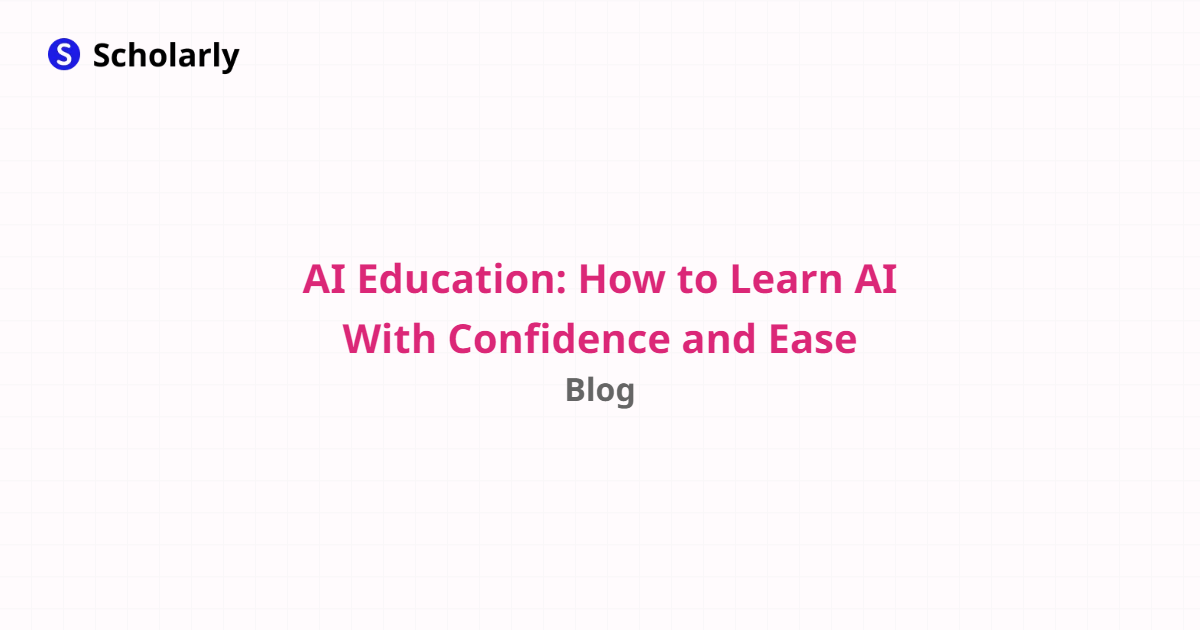Published in General
The Importance of Autocomplete for Students: Enhancing Learning and Productivity
By Scholarly
5 min read
Introduction
Autocomplete technology has become an integral part of students' lives, revolutionizing the way they learn, research, and complete assignments. This article explores the importance of autocomplete for students, discussing its impact on learning and productivity. By providing intelligent suggestions and saving valuable time, autocomplete enhances students' educational journey. In this article, we will delve into the benefits, best practices, and future applications of autocomplete technology.
History
Past State
In the past, students relied on traditional research methods, such as flipping through books and manually searching for information. This process was time-consuming and often limited the scope of their research. Students had to carefully craft their search queries to obtain relevant results, which sometimes led to frustration and wasted time.
Current State
With the advent of autocomplete technology, students now enjoy a more efficient and streamlined research experience. Autocomplete algorithms use machine learning to suggest search queries and complete sentences based on user input. This technology not only saves time but also broadens the range of information students can access. Autocomplete has become an indispensable tool for students, aiding them in generating ideas, refining search queries, and discovering new content.
Future State
Looking ahead, autocomplete technology is poised to further transform learning and research. As artificial intelligence (AI) continues to advance, autocomplete algorithms will become smarter, offering more accurate and personalized suggestions. In the future, autocomplete could assist students in generating comprehensive outlines, summarizing texts, and even predicting the most relevant sources for their research topics. This technology has immense potential in accelerating students' academic journey and empowering them to delve deeper into their fields of study.
Benefits
Autocomplete technology brings a myriad of benefits for students:
Time Efficiency: By automatically completing search queries and sentences, autocomplete technology saves students valuable time. This allows them to focus more on critical thinking and analysis.
Improved Accuracy: Autocomplete algorithms consider popular search queries and users' preferences, leading to more accurate suggestions. Students can trust the technology to offer reliable and relevant information.
Enhanced Productivity: Autocomplete helps students generate ideas, expand their knowledge, and explore new perspectives. This technology fuels their creativity and cultivates a productive learning environment.
Wider Information Access: Autocomplete enables students to discover new sources, authors, and research avenues. It broadens their horizons, encouraging them to explore diverse perspectives and make well-informed decisions.
Learning Assistance: Autocomplete can provide instant definitions, examples, and explanations, acting as a handy learning tool for students. It supports their comprehension and facilitates a deeper understanding of concepts.
Significance
The significance of autocomplete for students cannot be overstated. This technology empowers them to overcome various challenges and enhances their educational journey in multiple ways:
Efficient Research: Autocomplete simplifies the research process, enabling students to quickly find relevant information. This efficiency allows them to conduct comprehensive and well-rounded research.
Knowledge Expansion: By suggesting related search queries and topics, autocomplete exposes students to a wider array of information. This exposure fosters a thirst for knowledge and encourages interdisciplinary thinking.
Language Proficiency: Autocomplete assists students in improving their language skills by offering grammatically correct suggestions. It serves as a language learning resource, helping students develop their writing and communication abilities.
Critical Thinking: Autocomplete prompts students with alternative search queries and approaches, stimulating their critical thinking skills. It encourages them to question assumptions and consider multiple perspectives.
Equal Access: Autocomplete promotes equal access to information by offering suggestions to users with varying levels of expertise. It levels the playing field and ensures that students have access to relevant and reliable sources.
Best Practices
To make the most of autocomplete technology, students should consider the following best practices:
Specify Search Queries: Be as specific as possible when entering search queries to obtain accurate and relevant suggestions.
Evaluate Suggestions: Evaluate the autocomplete suggestions critically and choose the most appropriate option for your research needs.
Diversify Sources: While autocomplete provides valuable suggestions, it is essential to explore multiple sources to gain a comprehensive understanding of a topic.
Stay Current: Keep up with the latest developments in autocomplete technology to leverage its full potential in your research activities.
Maintain Digital Literacy: Develop strong digital literacy skills to effectively navigate autocomplete suggestions and assess information reliability.
Pros and Cons
Understanding both the advantages and limitations of autocomplete technology is crucial for students:
Pros
Time-Saving: Autocomplete accelerates the research process, saving students significant amounts of time.
Enhanced Creativity: By sparking new ideas and offering fresh perspectives, autocomplete fosters students' creativity.
Increased Efficiency: Autocomplete streamlines the workflow and improves students' productivity.
Improved Search Queries: Autocomplete helps students refine their search queries, resulting in more accurate and relevant search results.
Supports Language Learning: Autocomplete assists students in developing their language skills by providing correct grammar and vocabulary suggestions.
Cons
Information Overload: Autocomplete may overwhelm students with an abundance of suggestions, requiring them to filter and evaluate the options carefully.
Reliance on Algorithm: Students must be mindful that autocomplete suggestions are generated by algorithms and may not always account for context or accuracy.
Limited Personalization: While autocomplete algorithms strive to offer personalized suggestions, their accuracy may vary depending on the user's preferences and specific needs.
Possible Biases: Autocomplete algorithms can reflect biases present in popular search queries, potentially influencing students' perception and understanding of certain topics.
Dependency on Technology: Over-reliance on autocomplete may hinder students' ability to think critically and independently.
Comparison
Several autocomplete tools are available to assist students in their research endeavors. Let's explore a few of them:
Google Autocomplete: One of the most widely used autocomplete tools, Google Autocomplete suggests search queries based on user input. It offers a user-friendly interface and guarantees comprehensive results.
Grammarly: While primarily known as a grammar checking tool, Grammarly also provides autocomplete suggestions to enhance students' writing skills. It helps improve language proficiency and offers grammatically correct sentence completions.
Google Docs: Google Docs incorporates autocomplete functionality within its word processing tool. It assists students in writing fluently and suggests appropriate words and phrases as they type.
Scholarly: Scholarly is a powerful AI-powered platform that integrates autocomplete technology with other essential features. It enhances the entire research process, from generating ideas to organizing information and creating flashcards.
Notion: Notion is a versatile productivity tool that offers autocomplete suggestions as users create pages and collaborate on projects. It combines note-taking, project management, and research capabilities in one platform.
Common Techniques
Students can maximize the benefits of autocomplete technology by applying the following techniques:
Keyword Expansion: Utilize autocomplete suggestions to identify related keywords and expand the scope of your research.
Concept Exploration: Use autocomplete to explore different aspects and subtopics related to your primary research focus.
Article Title Generation: Get inspiration for article titles by inputting relevant keywords and phrases into autocomplete.
Language Learning Aid: Leverage autocomplete suggestions as language learning prompts to enhance your vocabulary and writing skills.
Search Query Refinement: As autocomplete provides alternative search queries, continually refine and modify your search terms to yield precise results.
Challenges
While autocomplete technology offers numerous advantages, it also presents certain challenges for students:
Information Overload: The abundance of autocomplete suggestions can at times overwhelm students, requiring them to develop effective filtering strategies.
Reliability Concerns: Autocomplete suggestions are generated by algorithms, and students must exercise caution when relying solely on this technology for accurate and trustworthy information.
Privacy Considerations: Autocomplete may collect and store user search data. Students should be mindful of privacy concerns and exercise caution when using autocomplete tools.
Bias and Stereotypes: Popular search queries may contain biases and stereotypes, which can affect autocomplete suggestions. Students should be aware of these potential biases and critically evaluate the suggestions.
Dependency on Technology: Over-reliance on autocomplete technology may hinder students' independent thinking and research skills.
Potential Online Apps
Several online apps leverage autocomplete technology to enhance students' learning experience. Let's explore some of them:
1. Scholarly
Scholarly is an AI-powered platform that offers AI-generated text completion, flashcard creation, and auto-complete features. It enables students to create pages, add text and images, and generate flashcards effortlessly. Scholarly's AI tutoring and study features assist students in comprehensively understanding their study material.
2. Grammarly
Grammarly is an acclaimed writing assistant that provides not only grammar checks but also autocomplete suggestions. It helps students enhance their writing skills and ensure their compositions are error-free.
3. Google Docs
Google Docs is a widely used collaborative platform that incorporates autocomplete functionality. It assists students in composing and editing documents seamlessly.
4. Notion
Notion is a versatile productivity tool that offers autocomplete suggestions as users create pages, take notes, and collaborate on projects. It combines the power of autocomplete with project management capabilities.
5. Tinycards
Tinycards is a flashcard app that utilizes autocomplete to enhance students' learning experience. It offers AI-generated multiple-choice and true or false questions based on their flashcards, promoting active recall and efficient study.
Conclusion
Autocomplete technology plays a vital role in students' educational journey, enhancing their learning experience and productivity. By offering intelligent suggestions and saving time, autocomplete unlocks new possibilities for research, creativity, and knowledge expansion. As this technology continues to evolve, students can expect even more sophisticated applications tailored to their specific needs. Embracing best practices, considering its pros and cons, and leveraging the potential of autocomplete apps can empower students to succeed academically and thrive in the digital age.
In conclusion, autocomplete technology holds immense promise for students, revolutionizing the way they learn, research, and create. Embracing this technology and harnessing its full potential can empower students to become lifelong learners and critical thinkers. With the advent of AI-powered platforms and applications, such as Scholarly, students have access to powerful tools that streamline their research, boost productivity, and enhance their learning outcomes. By leveraging autocomplete technology, students can acquire knowledge more efficiently, explore new ideas, and excel in their academic pursuits.




